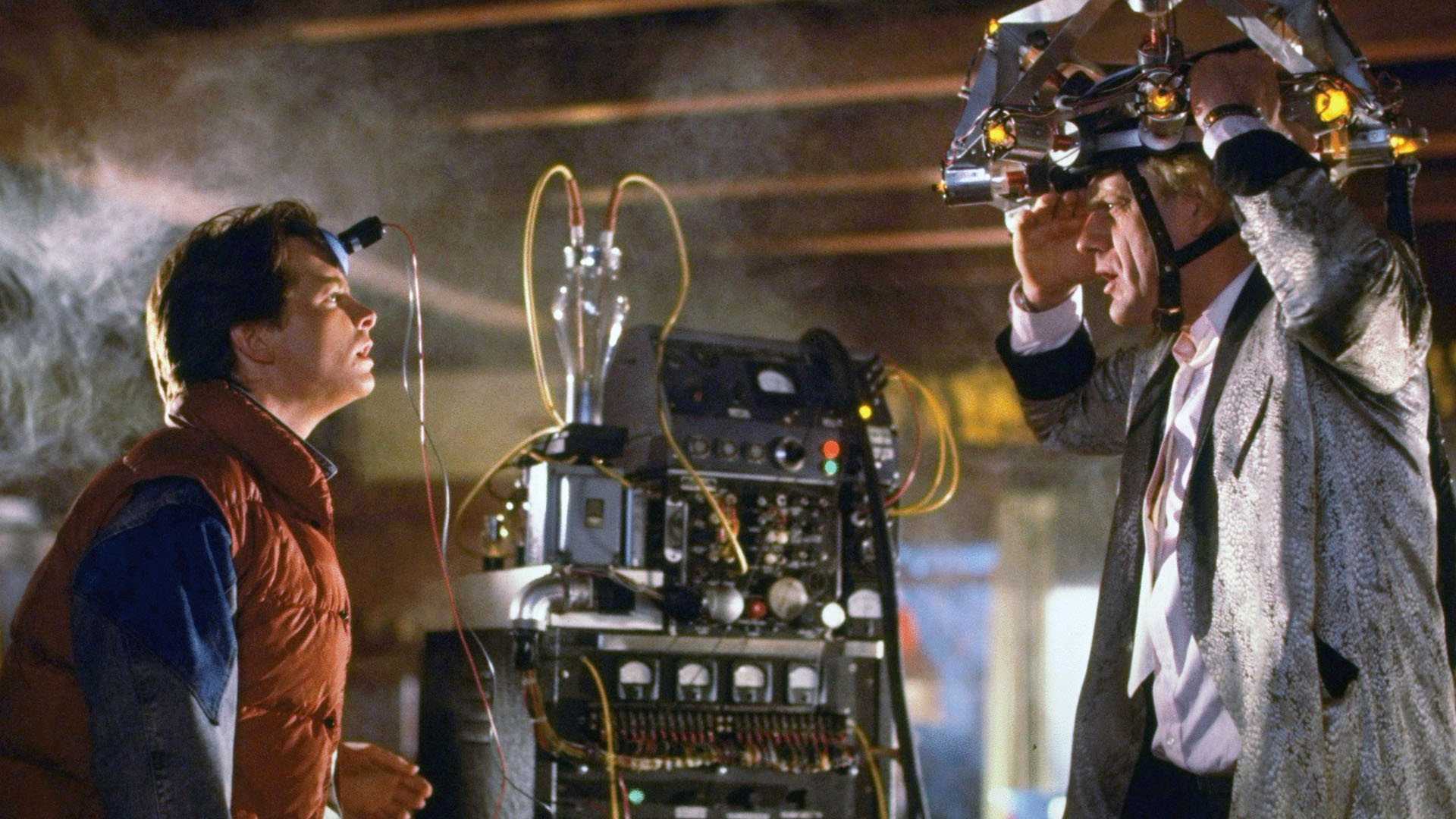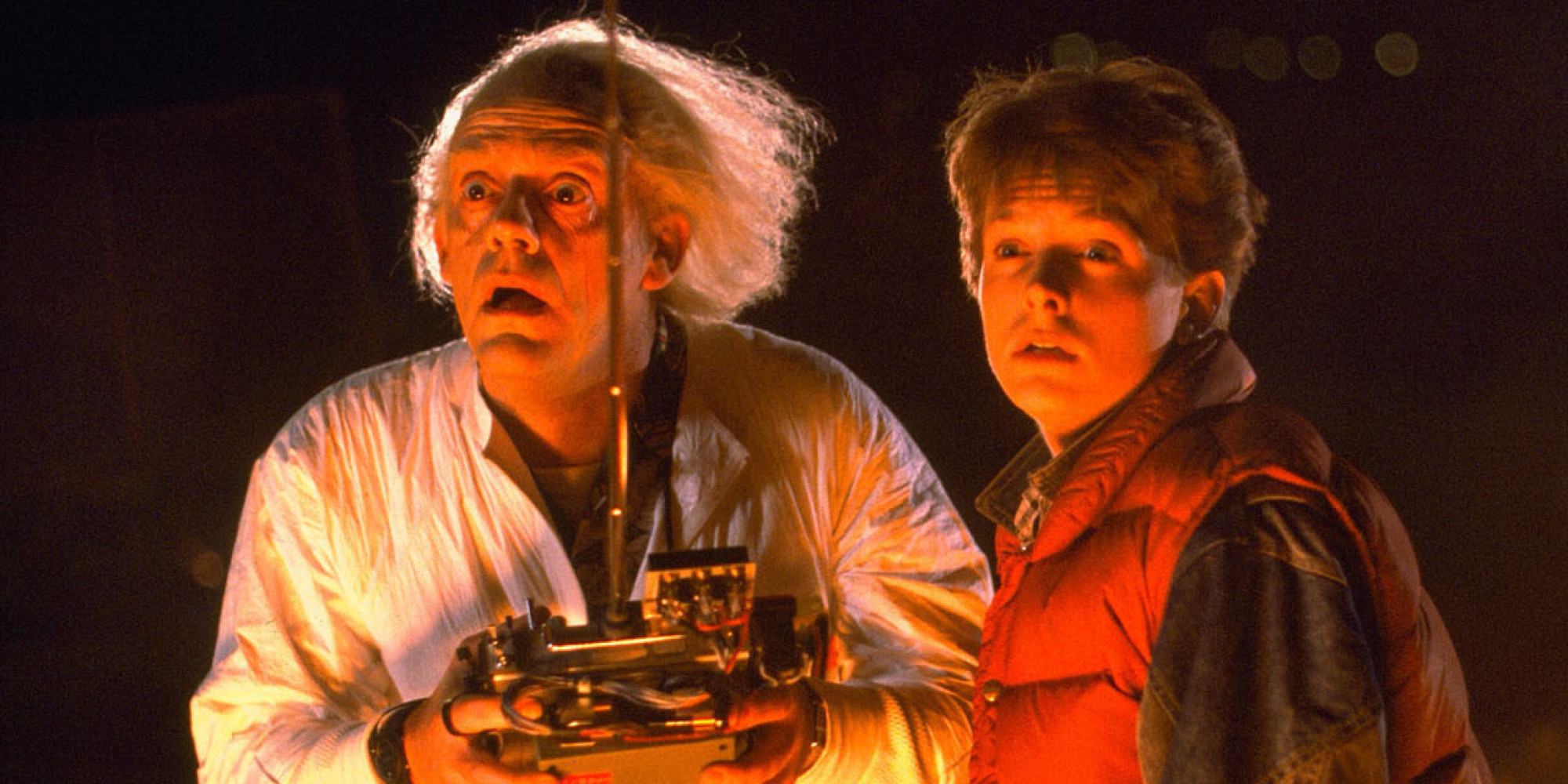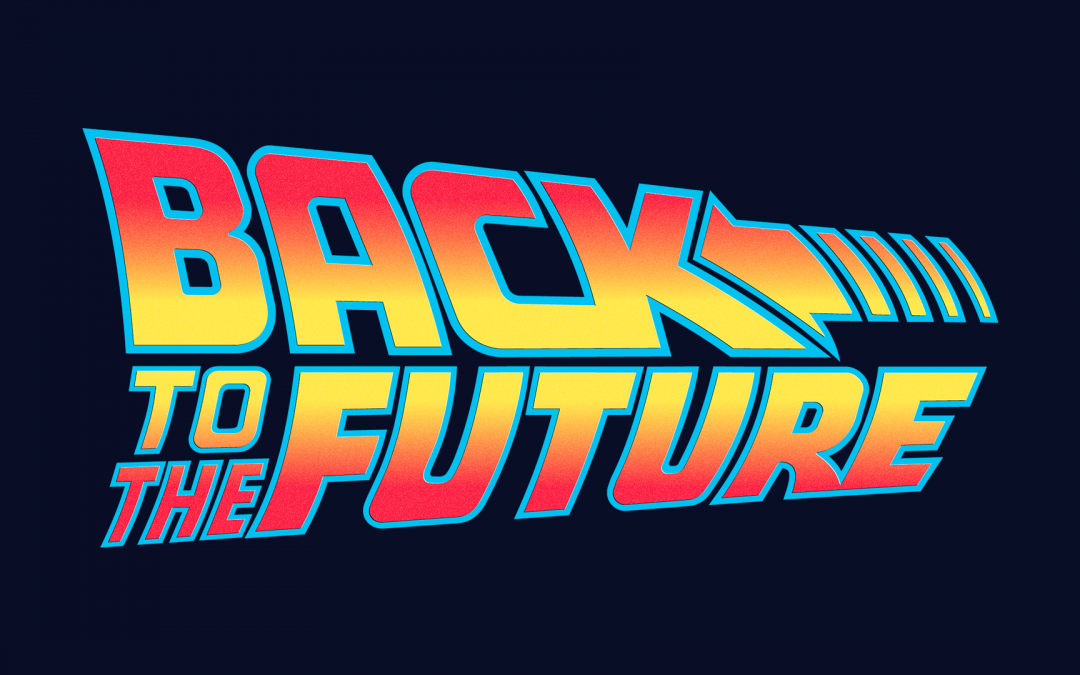Back to the Future almost didn’t exist.
When Robert Zemeckis and Bob Gale were shopping the script for the now-legendary 1985 science fiction comedy to studios, few wanted to go near it. According to Variety, many executives suggested the lighthearted romp would be well-suited for Disney, but Disney balked at Marty McFly’s 1955 awkward backseat dalliance with his mother Lorraine. Even when the film found a home with Universal, production was messy: original McFly actor Eric Stolz was dumped for Michael J. Fox, while editing and scheduling bumps made a complete film seem increasingly unlikely. Back to the Future eventually premiered in theaters on July 3, 1985 — and the future has never been the same.
It’s safe to say that the Back to the Future trilogy is as close as you can get to a true American comedic franchise after the ever-diluted National Lampoonfamily. The jokes and dialogue are fixtures of our pop culture jargon (Great Scott!), while the the DeLorean became as symbolic of the eighties as frizzy hair and cocaine. Future Day, October 21, 2015, the day that McFly arrives in the future in Back to the Future II, is our adoration made real, a global testament to the staying power of what started out as a very strange day for a Hill Valley, California, teenager.

A lot of this has to do with the conceit, while totally absurd even by 1980s standards, that made the film so palpable and appealing to audiences for more than 30 years. The storyline of the first movie was primed for success among young, theatergoing audiences when it first premiered: a young, somewhat rebellious teen takes down a bully, does well by his family, and gets the girl, albeit with the help of a time-travelling mad scientist and some advance knowledge of the future. It’s every pure male adolescent fantasy made real, years before those fantasies were tainted by the melodrama of, say The Real Worldor Degrassi (suck it, Drake).
But beyond slobbering boys looking for a theatrical affirmation of their teenage daydreams, the franchise manages to take the powerful, complimentary impulses of wistful nostalgia and optimistic futurism and distil them into a delightful, lighthearted summer blockbuster. Premiering at the height of the Reagan Era, Back to the Future was in part a love letter to the bucolic peace of the Eisenhower era, a shot in the gut for the Baby Boomer audiences who came of age during America’s post-war expansion (Doc Brown’s puzzlement with President Reagan “the actor?!” in 1955 drives this home). Back to the Future II, McFly’s jaunt into the future, was a look at how American culture might continue to thrive and prosper. Our fixation with Future Day is a reflection of this optimism, just as our fixation on the hoverboard and the fly car anchor our disillusionment with society’s technological progress. The trilogy, taken as a whole, is a sugar high for the all-American theatergoer — and that message has managed to resonate for more than three decades.

This is all well and good, but let’s be honest: regardless of the original plot and powerful veins of optimism running through the film, Back to the Future could have been a total disaster. Part of the staying power of the film and its themes stems from the fact that, frankly, it’s impossible to watch any one Back to the Future film alone; they demand to be watched consecutively, as one complete story, in a way that very few franchises actually do (such it Terminator, and also sort of suck it Star Wars, and DEFINITELY suck it Jurassic Park). Even the idea of doing Back to the Future4, despite the appeals of fans, feels just wrong, like rebooting Citizen Kane or To Kill a Mockingbird.
When you look at all three an Future movies together, you can’t help but admire their clockwork symmetry—the scenes rhyming with other scenes, the gags rhyming with other gags (there are three confrontations in three diners followed by three chases around the town square). More than a few of these feel like knowing jokes about what it means to make a sequel to a hit movie: how to give people something that’s the same, but different. This notion is most ingeniously explored in the climax to “II”, which inserts alternate versions of Marty and Biff into the school dance that ended the original.

This aesthetic consistency is a palpable force for viewers. Consider the anxiety of George Lucas’s campy ‘remastering’ of the original Star Wars trilogy in the early aughts, which added in abhorrent extra creatures and sequences where they shouldn’t have been; it’s this anxiety that pervades every far-flung sequel and every upcoming reboot (of which there are far too many).
But it’s not just consistency across all three films, but internally, too. The re-use of specific jokes (“This is heavy.” “I hate manure.”) and there film-to-film permutations are the predictable, comfortable threads that bind us to the franchise, warmer and more welcoming than the obligatory “I’ll be back” of the Terminator franchise. The closest modern equivalent of this is in Simon Pegg and Nick Frost’s beloved Three Cornettos trilogy — underground hit Shaun of the Dead, Hot Fuzz, and the batshit insane The World’s End — which essentially repeat whole portions of dialogue before and after the world goes to shit for comedic effect. There’s a reason Zemeckis, engineer of some of American cinema’s biggest blockbusters, has been dubbed one of the greatest “visual storytellers” in filmmaking, and those reasons are on display in the Back to the Future franchise.

It might be too much to argue that Back to the Future and its sequels represent the pinnacle of American cinema, but they’re pretty damn close. From the powerful, emotionally resonant themes of optimism that stretch from 1955 to 2015 to the visual gags that now stand alone in contemporary pop culture, it’s hard to think of a film that better captures the most enduring themes of American culture. And, frankly, its likely the trilogy would never have made such an impact without the guiding hand of Zemeckis. To paraphrase Doc Brown: If you’re going to build one of the greatest films in American culture, why not do it with some style.

